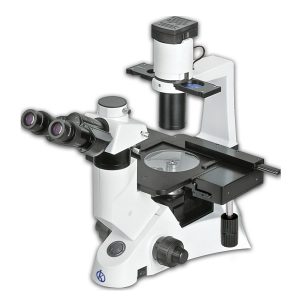Initially, the use of the stereoscopic microscope is employed to make studies of very tiny samples, to be analyzed with the naked eye, from another larger perspective, under the compound microscope. Its magnification ranges from about 5x to more than 60x, and uses light expressed on the surface of the object under study. Stereoscopes are also known as dissecting microscopes, as they are often used to store samples, separating from them those parts that will be examined by other types of microscopy.
They are a great tool for all those people who start in the world of microscopy since they do not require any type of sample preparation.
Development Mechanisms
Usually, stereoscopic microscopes work with reflected light, where the sample is illuminated, and it is observed through the lenses and eyes. Thus, samples can be seen without finely cutting them, as in the case of transmitted light microscopes, where light passes through the sample before reaching the target. This is why, usually, stereoscopic microscopes also have neither a capacitor nor a diaphragm.
This type of microscope is therefore useful to observe all types of objects in an expanded way, without the need to carry out a process of preparing the sample. In this way, it is useful for the use of the microscope within the medical field and its various applications, as well as the quality control of materials, the elaboration of microcircuits, the assembly of clocks or microsurgery procedures. In general, they are widely used in fields where the sample must be manipulated while watching.
Functions of the Stereoscopic Microscope
Stereoscopic microscopes allow the 3D visualization of clear samples with the naked eye. They’re known as dissecting microscopes. It is estimated that 99% of stereoscopic applications, employ less than 50 magnifications, are usually used to see insects, crystals, plant life, circuit boards, etc.
- Dual Power Scaling: Dual power stereoscopic microscopes deliver two or more fixed scaling scales at a more feasible price, without sacrificing optical quality. The two most common types are 10x/30x and 20x/40x. The dual force, it’s excellent for the starter microscopes.
- Zoom Magnification: Allows you to zoom comfortably through a range of magnifications, similar to binoculars or an SLR camera. Some, have stops or click stops at intervals across the zoom range so you can quickly return to an accurate zoom level in the zoom range.
- Focus: All stereoscopic microscope applications require only the top light. This displays a solid or opaque object, using only the incident (top) light.
- Barlow Lens: You can use a Barlow lens or an optional accessory lens, to alter the focal length of your microscope and thus the magnification power, field of view and working distance.
Characteristics of the Stereoscopic Microscope
The stereoscopic microscope has three key parts, namely body, focus block and head-body vision. Among them:
- Body (or head of vision), is the one that holds the optical parts on top of the instrument.
- Focus block, attaches the microscope head to the holder and focuses it.
- Support, supports microscope as well as integrated lighting.
- Eyepiece lenses, these are located on top of the microscope. a.
- Eyepiece standard, has a power of increase of 10X.
- Optional eyepiece has a variable power ranging from 5X to 30X.
- Eyepiece tube, holds eyepiece in place; located just above the lens of the lens.
- Diopter adjustment ring, allows possible vision inconsistencies in one or both eyes.
- Objective lenses.
- Focus, the stereoscopic microscope has thick focus controls.
- Stage of work, is a place where the sample to be examined is placed.
- Scenario clips are used only in the absence of a mechanical scenario.
- Transmitted illumination, used to illuminate the sample.
Kalstein brand microscope
At Kalstein, we are equipped with the most extensive technology in trained laboratory equipment, to meet all the demands of our customers. In this case, we offer you the Microscopes, belonging to the YR models, with very attractive general features, such as; Infinity Infinity Optical System, Infinity Binocular Display Head siedentopf; inclined to 45° interpupillary 47-78 mm. Inserted Abbe capacitor NA1.25 (including empty plate). 3 W S-LED (LCD screen amplification), sleep timer, brightness lock and indication, etc., Two wave range (B, G, U, V can be combined). Lens lighting fly-eye. application software. Tilt binocular display head. Fivefold backward (no coding). Scenario without frame 230 mm x 150 mm, range of motion 78 mm x 54 mm
We are manufacturers and we have the best advice, so that your purchase is the ideal and at excellent prices. For more information, visit our website HERE

